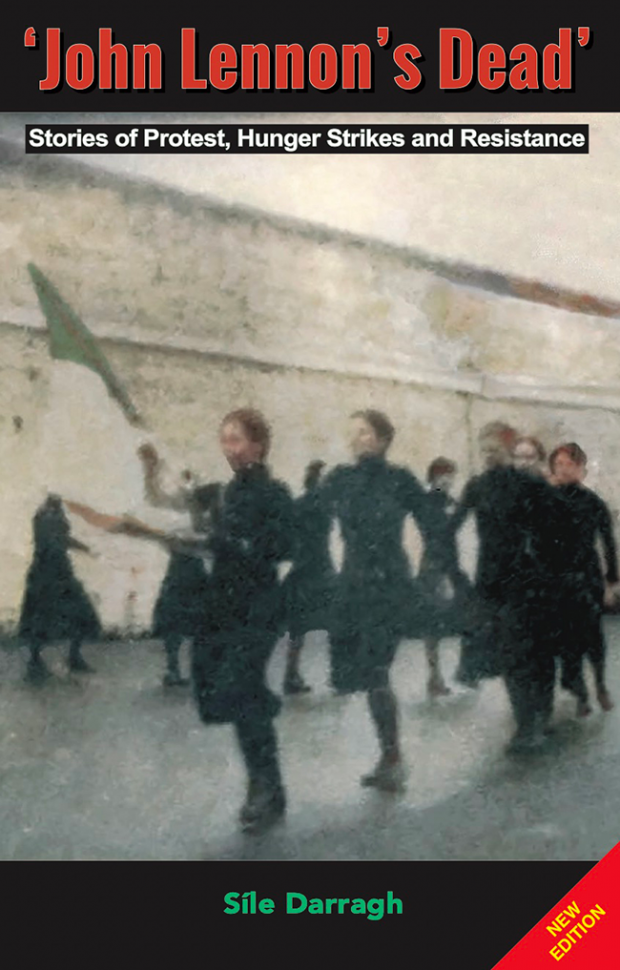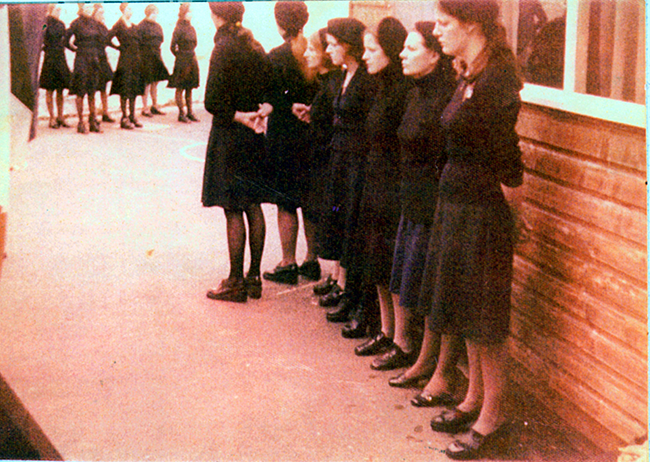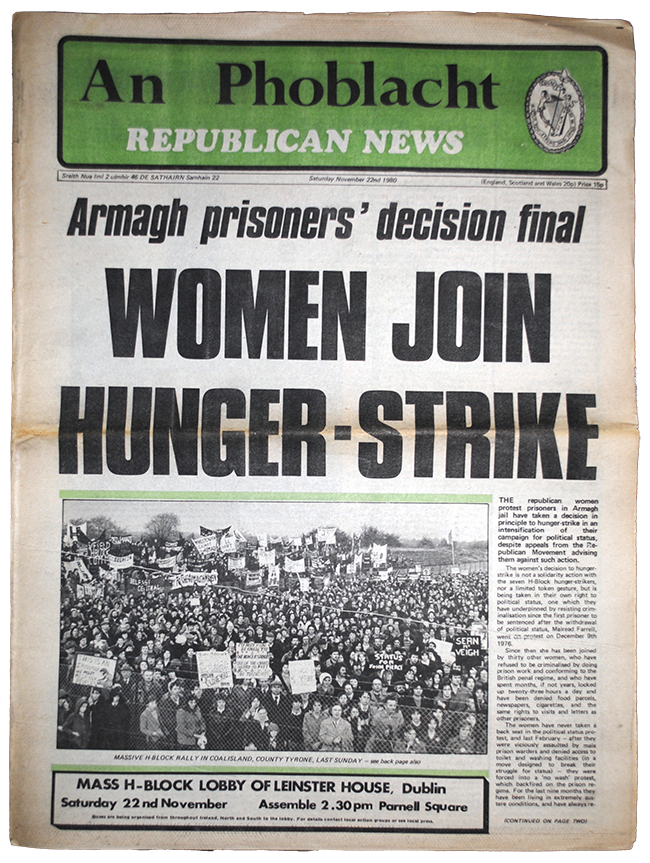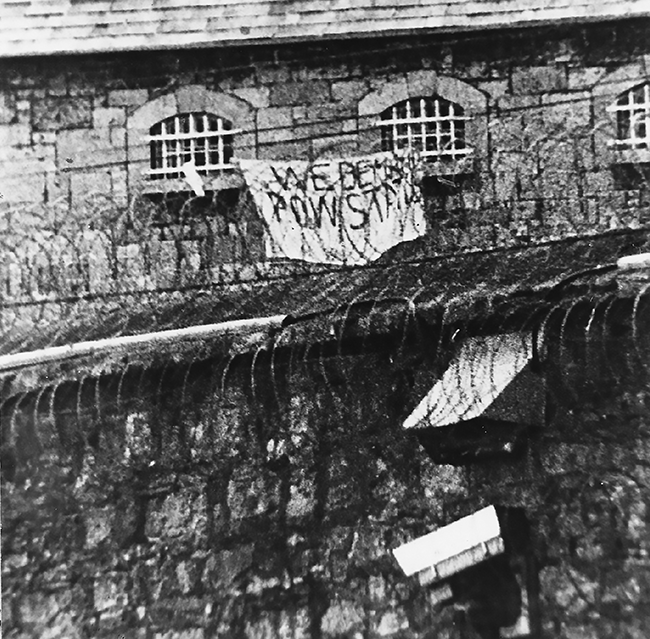4 August 2022 Edition
A tale of solidarity and struggle

Mairéad Farrell reviews the republished ‘John Lennon’s Dead’ by Síle Darragh
• • • • • • • • • • •
‘John Lennon’s Dead - Stories of Protest, Hunger Strikes and Resistance’
Published by Beyond the Pale Books
Priced £10
“I remember as darkness fell my Daddy telling my elder sister Noreen and me to lie on the floor of the living room with bullets ricocheting off the back walls of our house, while he went out into the night, risking the gunfire in order to get help to evacuate us.”
The first pages of Síle Darragh’s newly republished ‘John Lennon’s Dead’ transport us to the author’s childhood home in 1970s East Belfast. The vivid description of the terrifying night of the 27 June of that year as experienced by a 12 year old Síle gives us the context of the world in which she grew up and which shaped her. On reading her story, the reality hits that no child should suffer such a terrifying incident, nor should it be allowed or enabled by the state in which that child lives.
The book focuses largely on Síle’s time in gaol. The experiences of republican women in gaol is something which is too often left out of discussions and the history of that period.
Of course, the establishment will always ensure that history books, newspapers, and art reinforce its point of view. Often, the life experience of the working class, the oppressed is excluded. The generations that follow are presented with this prejudiced narrative as ‘history’. For subsequent generations to find out what life felt like for the people who struggled, they can usually only do so by accessing materials that record personal experience. For this reason, it is of paramount importance that the working class and revolutionaries document what it was like to live through their times, tell of their struggle and their life experience, through stories, poems, and memoirs.

• Drilling for Easter Commemoration in Armagh, 1979
For this reason alone, Síle Darragh’s recently republished book about her experience as an IRA prisoner in Armagh Gaol, ‘John Lennon’s Dead’, is of such importance.
The book brings to life and humanises women, many of whom have passed away and allows the reader to get to know their unique personalities. The average age of the women in Armagh Gaol in the early 1970s ranged from 17 to 19 years old. Readers realise just how young they were – swapping clothes, getting dressed up for prison visits and talking about their lives – and the reality that many of these women will be spending their young lives in that gaol.
The brutality of 7 February 1980 is described with such detail that it feels like one is witnessing it; the thumps, muffled sounds as women are dragged from their cells, the feeling of helplessness.
“The male screws had obviously hyped themselves up in expectation of trouble and they went bezerk... They grabbed women in head locks, twisted arms, kicked and punched… Anne Marie Quinn was being held in a headlock with her throat being pressed against the side bar of the metal stairs, gasping for breath.”
This proved to be a turning point in the struggle in Armagh Gaol, with toilets being locked and the authorities’ refusal to allow the emptying of chamber pots leading to the no wash protest. While such vital points in the history of the men’s struggle in Long Kesh are known by many, that same understanding cannot be said of the experiences of the women in Armagh.

Very little has been written about the women’s participation in the 1980 Hunger Strike; indeed, it is regularly forgotten. This memoir is a powerful insight into that period. Throughout the book, the medical neglect of the women is highlighted, with some very serious results. This again is seen during the Hunger Strike when something as simple as informing the women of salt tablets, which they could take, was not done. It details the impact of the strike on the women’s bodies, the morale within the gaol, and the continuation of daily life in such tense times.
Until such time as we take control of our own story in history books and historical records, we will rely on books such as this to give us the perspective of the oppressed, and usually this applies particularly to working class women. Síle Darragh realised this. She had the foresight to send all her prison comms to Chicago for safekeeping and she writes:
“In 2001, 20 later, I got them back, and I cried again. Once more I was that young woman of 23 sitting in a cell in Armagh gaol, reliving the terrible memories of a terrible period in my life.”
This book documents with some humour and much heartbreak the story of these women but what stands out is the anguish. They were a family, and a loss for one was a loss for all. This experience forged a profound sense of solidarity and the knowledge of the strength in unity. Síle’s account shows that united we are stronger, that they survived because they were a group of comrades who remain comrades to this day.
The legacy of Síle and her comrades is the next generation of confident republican women who not only demand their place but expect it.

• Protest in Armagh Gaol for Political Status, 1978
• Mairéad Farrell is a Sinn Féin TD for Galway West and party spokesperson on Public Expenditure and Reform
> ‘John Lennon’s Dead - Stories of Protest, Hunger Strikes and Resistance’




